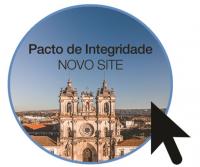- HOME
- MONUMENT
- VISIT OUR MONUMENT
- HERITAGE LEARNING
- ALCOBAÇA
- MONASTERIRES ROUTE

King Afonso III
Afonso III (b. Coimbra, 5 May 1210; † 16 February 1279), the fifth King of Portugal, second son of Afonso II and Queen Urraca, nicknamed The Boulognian. He ascended to the throne upon the death of his brother King Sancho II in 1248.
Prince Afonso travelled to Denmark at the age of 18 accompanying his sister Leonor, who was to marry Valdemar the Young of Denmark. Later he joined the French court of his maternal aunt, Blanche of Castile, the wife of Louis VIII. There he completed his education and was knighted. He also acquired the title Count of Boulogne through marriage to Matilda II of Boulogne, the heiress to the county of Boulogne.
The prestige Afonso acquired at the French court and the administrative disorder that ruled in Portugal, as well as the hostility of the privileged classes to King Sancho II, led to his name emerging as a desired alternative for governance of the country. Thus, in 1246, the Count of Boulogne disembarked in Portugal to take over the regency of the kingdom by Papal decree. A climate of civil war is installed but Sancho’s weakened political position meant that he was exiled to Toledo, where he died on 4 January 1248. When the crown was handed to Afonso, he dedicated himself to re-establishing law and order.
With the royal authority re-established, Afonso proceeded with conquering the Algarve (1249-1250), although the borders were only definitively determined after resolution of an intense diplomatic conflict with Afonso X of Castile, a situation Afonso III managed with aplomb.
The political and administrative reorganisation of Portugal became a preoccupation for the new King, who summoned the Cortes [parliamentary sessions] in Leiria in 1254, the first to include municipal representatives. With a view to consolidating the kingdom’s finances and consolidating regal powers, Afonso ordered the restructuring of the currency and implemented the Inquirições Gerais [investigations into possessions of the crown unduly held the clergy and the nobility] of 1258.
Joaquim Veríssimo Serrão writes that D. Afonso III was the first Portuguese king to have advanced notions of municipal administration, seeking to create “centres of autonomous life for the furtherance of the Portuguese State.” (História de Portugal, Vol I., p. 146)
King Afonso III and the Monastery of Alcobaça
The Monastery of Alcobaça, as one of the great centres of knowledge dissemination in mediaeval Portugal (along with the Santa Cruz Monastery in Coimbra), is linked to King Afonso III in a number of ways. At the administrative level, it is known that when the King ordered the restructuring of the Portuguese currency (at the Cortes of Coimbra in 1261), one of the three prototypes made was deposited at Alcobaça (the others were entrusted to the King’s reposto and the Santa Cruz Monastery), with the Monastery’s abbot promising to safeguard and protect the sample until the King decided to proceed with the minting.
Upon his death in 1279, Afonso III was buried in São Domingos de Benfica. His remains were only transferred to Alcobaça ten years later, thus complying with a provision of his will, which also bequeathed the sum of 3,000 pounds for works on the cloister.
At the base of the Retable of the Death of St. Bernard in the Monastery’s Church one can find the funereal inscription for Afonso III engraved on the wall.
The theory that the mortal remains of his second wife, Beatriz de Gusmão, and his three children, Fernando, Sancha and Vicente, also lie in the Royal Pantheon at the Monastery is generally held to be credible.
SERVICES - ACTIVITIES




